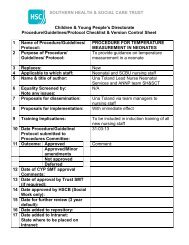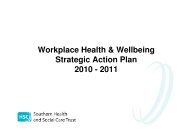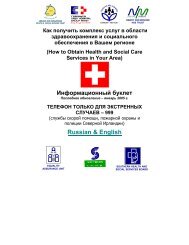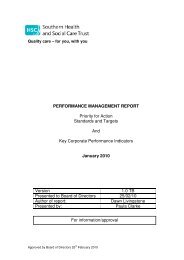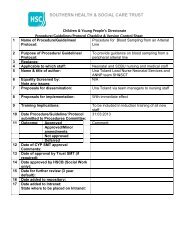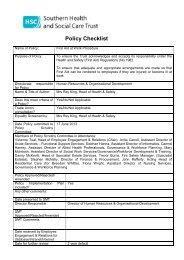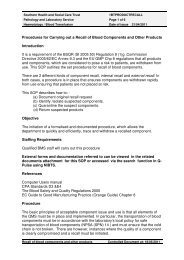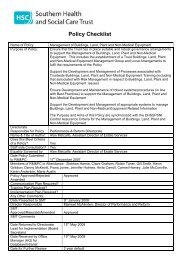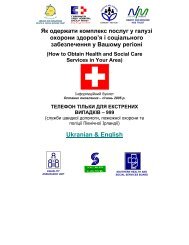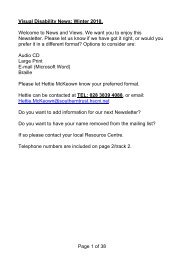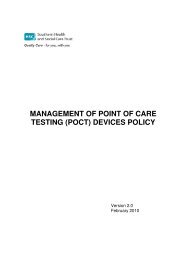Planned Neonatal Extubation - Southern Health and Social Care Trust
Planned Neonatal Extubation - Southern Health and Social Care Trust
Planned Neonatal Extubation - Southern Health and Social Care Trust
Create successful ePaper yourself
Turn your PDF publications into a flip-book with our unique Google optimized e-Paper software.
SOUTHERN HEALTH & SOCIAL CARE TRUSTDecontaminate h<strong>and</strong>s as per local policyadhering to 7 step technique <strong>and</strong> 5moments of h<strong>and</strong> hygiene.Using Olive oil remove tape securing ETTin place carefully. Consider giving a fewdrops of sucrose for pain relief unlesscontraindicatedApply suction to the mouth if required <strong>and</strong>change suction catheter.Insert clean suction catheter down ETT topredetermined length, apply suction <strong>and</strong>withdraw the catheter noting colour,amount <strong>and</strong> consistency of secretionsRepeat suctioning until secretions areminimal.Insert clean suction catheter down ETT<strong>and</strong> withdraw the catheter simultaneouslywith the ETT.Apply facial mask oxygen if required <strong>and</strong>initiate CPAP promptly if indicated.To reduce risk of cross contamination.Avoids skin damage <strong>and</strong> facilitates ease ofremoval of ETT.To ensure clear airway.Reduces risk of aspiration if infant inhalesmucous whilst ETT is removed.Ensures continual respiratory support <strong>and</strong>oxygenation to infant.If additional oxygen only requiredcommence incubator oxygen.It may be beneficial for the infant to benursed prone following extubation.Positioning will depend on infants’condition.<strong>Extubation</strong> may provide the firstopportunity to obtain a photograph of theinfants face for the parents. If the infants’condition allows, obtain a photographbefore applying CPAP.Observe the infants response to extubation<strong>and</strong> continue to monitor for any signs ofrespiratory distress.Measure <strong>and</strong> record a blood gas one hourpost extubation or as ordered.Record all details of the procedure in theinfants chart.The prone position improves oxygenationdue to mechanical advantages on chestwall expansion.To provide on-going support to parents<strong>and</strong> to promote attachment <strong>and</strong> bonding.To allow detection of increasing distresspost extubation <strong>and</strong> allow prompt responseto alleviate same.To monitor respiratory status.To ensure adherence to NMC st<strong>and</strong>ardsfor record keeping.March 2013




